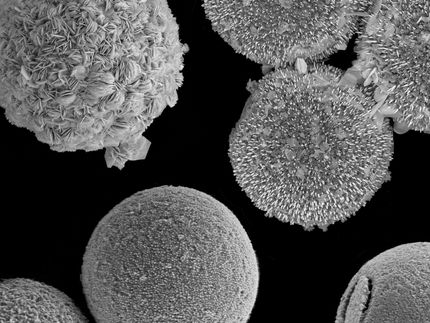The odor of stones
diatoms are unicellular algae that are native in many waters. They are a major component of marine phytoplankton and the food base for a large variety of marine organisms. In addition, they produce about one fifth of the oxygen in the atmosphere and are therefore a key factor for our global climate. However, these algae, which measure only a few micrometers, have yet another amazing ability: they can “smell” stones. “To be more precise, these algae are able to locate dissolved silicate minerals,” Prof. Dr. Georg Pohnert, the chair of Instrumental Analytics at the Friedrich Schiller University in Jena, Germany, explains. A recent study by Pohnert and his research team demonstrates that diatoms are not only able to trace silicate minerals in the water. Moreover, they can even move actively to areas where the concentration of silicates is especially high.
Algae need silicate for the structure of their strong mineral cell membranes, which are composed of two overlapping parts like a cardboard shoe box with a lid. During cell division, each of the two new cells receives one half of the box and regenerates the missing lid. “The algae have to search their environment for the building material,” says Pohnert, who is also a Fellow at the Jena Max Planck Institute for Chemical Ecology.
For their study, the researchers from Jena and their colleagues from the University of Ghent, Belgium, observed and filmed Seminavis robusta diatoms under the microscope. The video shows what happens when algae are fed with a single silicate loaded granule: The tiny single-cell organisms, which grow in a biofilm on a solid surface, perform back and forth moves to approach the silicate source in the center of the screen and virtually “gobble it up”. The algae are able to cover a distance of two micrometers per second, as shown in fast motion in the video. “It becomes obvious that diatom-dominated biofilms are actually constantly moving,” Pohnert points out.
How the algae succeed in performing a target-oriented movement remains to be elucidated yet. “We do currently not know, which receptors the algae have or which mechanisms mediate the perception,” says Karen Grace Bondoc from Pohnert’s research team. The PhD student, who is a fellow of the International Max Planck Research School “Exploration of Ecological Interactions with Molecular and Chemical Techniques”, is the first author of the publication. In her PhD project she studies complex interactions of the organisms in marine biofilms.
However, the scientists showed that the diatoms were solely attracted by the odor of the silicate. If the researchers replaced the silicate mineral with structurally similar salts containing Germanium which is toxic to the algae, the algae moved away from the mineral source. Even though the experiments are pure basic research, the Jena chemists see the potential for practical application in the long term. “If we understand the processes that make the algae colonize one particular area or avoid other regions, we could use this information to selectively design surfaces and materials in such a way that they stay free of algae,” Pohnert emphasizes. Such materials could be used for the hulls of ships or water pipes which are often damaged by algal colonization.
Original publication
Other news from the department science

Get the chemical industry in your inbox
By submitting this form you agree that LUMITOS AG will send you the newsletter(s) selected above by email. Your data will not be passed on to third parties. Your data will be stored and processed in accordance with our data protection regulations. LUMITOS may contact you by email for the purpose of advertising or market and opinion surveys. You can revoke your consent at any time without giving reasons to LUMITOS AG, Ernst-Augustin-Str. 2, 12489 Berlin, Germany or by e-mail at revoke@lumitos.com with effect for the future. In addition, each email contains a link to unsubscribe from the corresponding newsletter.




























































